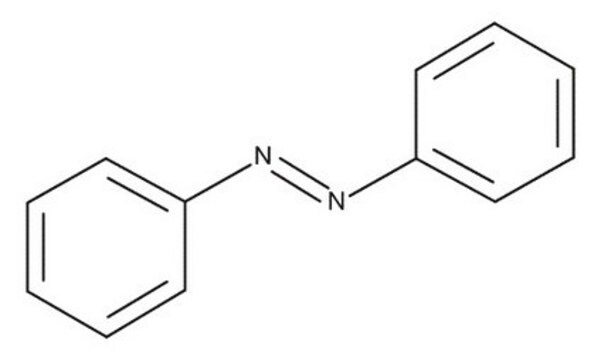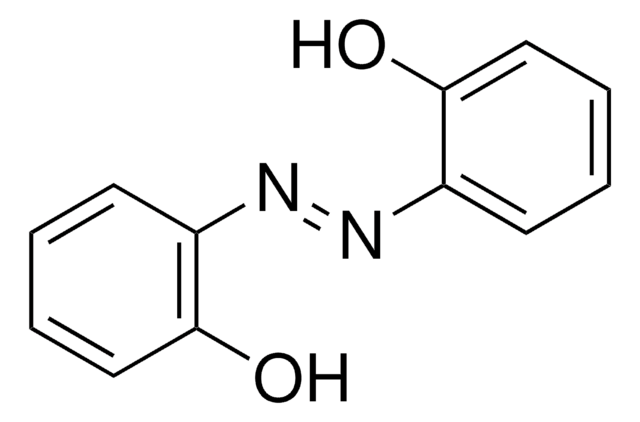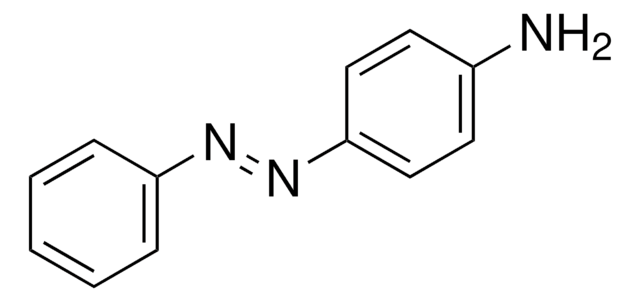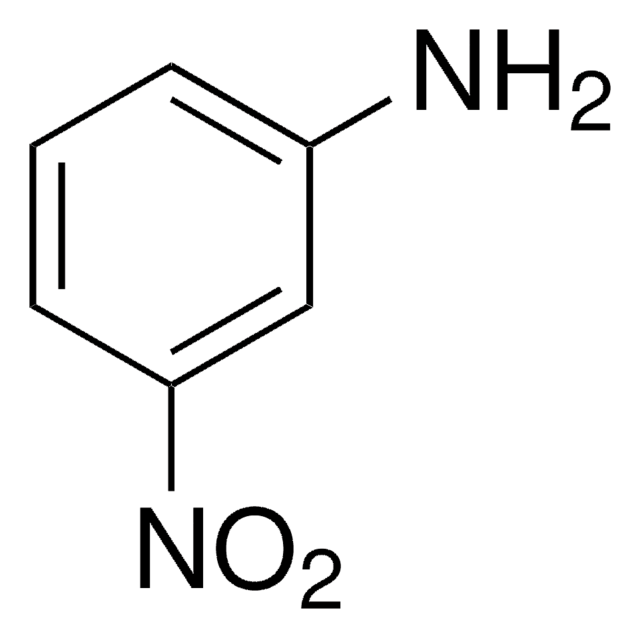424633
Azobenzene
98%
Synonym(s):
1,2-Diphenyldiazene; Diphenyldiazene
About This Item
Recommended Products
vapor pressure
1 mmHg ( 104 °C)
Quality Level
Assay
98%
form
powder or crystals
autoignition temp.
890 °F
technique(s)
titration: suitable
bp
293 °C (lit.)
mp
65-68 °C (lit.)
density
1.09 g/mL at 25 °C (lit.)
application(s)
diagnostic assay manufacturing
hematology
histology
storage temp.
room temp
SMILES string
c1ccc(cc1)\N=N\c2ccccc2
InChI
1S/C12H10N2/c1-3-7-11(8-4-1)13-14-12-9-5-2-6-10-12/h1-10H/b14-13+
InChI key
DMLAVOWQYNRWNQ-BUHFOSPRSA-N
Looking for similar products? Visit Product Comparison Guide
Related Categories
General description
Application
As human tissue is translucent to red and near-infrared light but opaque to blue and UV light, Azobenzene is important in medicine and photopharmacology for applications that involve shifting the absorptions of both trans and cis isomers of azobenzene to longer wavelengths.
Signal Word
Danger
Hazard Statements
Precautionary Statements
Hazard Classifications
Acute Tox. 4 Inhalation - Acute Tox. 4 Oral - Aquatic Acute 1 - Aquatic Chronic 1 - Carc. 1B - Muta. 2 - STOT RE 2
Storage Class Code
6.1C - Combustible acute toxic Cat.3 / toxic compounds or compounds which causing chronic effects
WGK
WGK 3
Flash Point(F)
212.0 °F - closed cup
Flash Point(C)
100.0 °C - closed cup
Personal Protective Equipment
Choose from one of the most recent versions:
Already Own This Product?
Find documentation for the products that you have recently purchased in the Document Library.
Customers Also Viewed
Our team of scientists has experience in all areas of research including Life Science, Material Science, Chemical Synthesis, Chromatography, Analytical and many others.
Contact Technical Service











